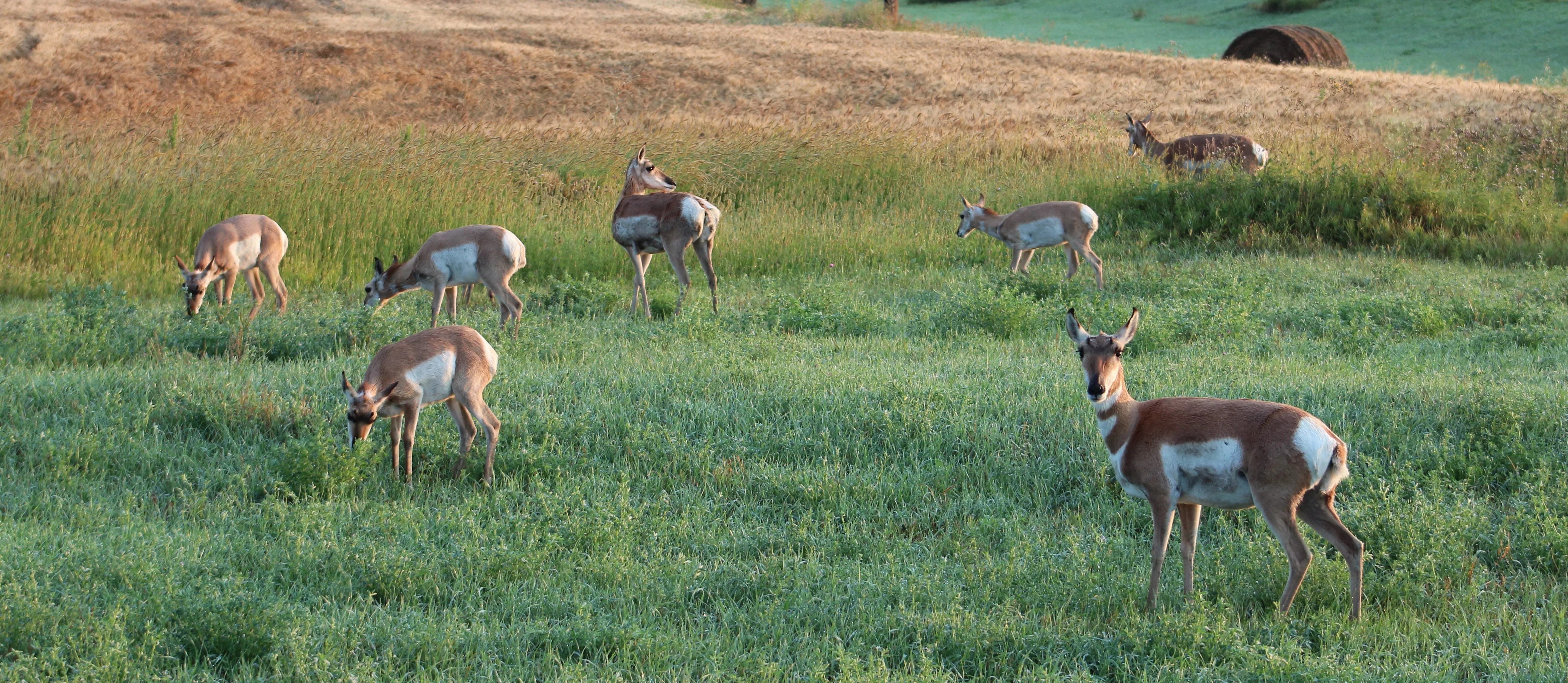
Pronghorn populations in North Dakota increased over the previous year, with a milder winter and better recruitment factoring into the uptick observed in surveys conducted this summer by the NDG&F Dept. Simonson Photo.
By Nick Simonson
Thanks to a milder winter and good fawning conditions this spring, North Dakota’s pronghorn populations have rebounded from a drop evidenced in the tallies of 2023. As a result, the number of tags issued to hunters in the state for the upcoming fall season have tripled, as the herd on the northeastern edge of their range showed improvement, according to Bruce Stillings, Big Game Management Supervisor for the North Dakota Game & Fish Department (NDG&F).
“That mild winter that we had really helps increase adult survival and then also increases the survival of those fawns that were born in 2023 and helps them get recruited into the 2024 population. So those are the reasons we saw a nice population bump range-wide,” Stillings reveals of results collected in early July.
Surveys conducted by NDG&F biologists and agents at the start of summer revealed an uptick across the board in the number of fawns, does and bucks in North Dakota’s pronghorn population. The ratio of fawns to does increased to 50-to-100 over 2023’s tally of 43-to-100. Buck to doe ratios remained relatively steady, with a count of 31-to-100 this year, compared to the 30-to-100 observed in the survey results of 2023. Overall tallies of pronghorn in North Dakota were up 31 percent from the previous year, where populations exhibited a 40 percent slide from counts in 2022, following the challenging winter. As a result, the agency has issued 1,265 tags with opportunities available in all of the historic pronghorn hunting units for fall 2024.
“With better adult survival, better recruitment, and better fawn production this year, we saw the numbers bump up to a level that we could provide a conservative hunting season in all the remaining units, so we added eight units to this year’s hunting season. It’s still very much a conservative harvest strategy – very few doe licenses, conservative on the “any” licenses – and so a nice increase, but certainly we would consider it conservative,” Stillings details of the upcoming season.
North Dakota’s pronghorn reside predominantly in the western third of the state and are one of the easternmost populations in the United States. Once observed as far east as the Red River Valley, the elbow of South Dakota and Minnesota, and even into western Iowa in the late 1800s, as land was developed for agriculture, their range shrunk to the harder-to-till rangeland, scrubland and deserts of the western and southwestern United States. Current populations remain susceptible to extensive fencing, habitat fragmentation, and due to these sensitivities and limited range, extreme weather events can cause the population swings observed in North Dakota over the past several years due to mortality and animal movement.
“Anytime we have one of those extreme winter events, with pronghorn living just right on the edge of having suitable habitat to have a potentially huntable population, those extreme winters can be hard. If the snow comes early and stacks up, through research we did in the early 2000s, those animals will start shifting south and west. Basically anything on this side of the lake [Sakakawea], will move south and west and get bottled up north of Beach or north of Belfield,” Stillings explains, adding that those populations of pronghorn south of I-94 may move across the border into South Dakota when weather forces them.
This year, with the upturn in numbers, NDG&F has opened all 17 historic units to hunting, where only eight were open last year when 420 tags were issued. The 1,265 tags available this season will be issued through the agency’s lottery system online at gf.nd.gov, with a deadline of Aug. 7. The bow-only hunting season for pronghorn opens at noon on Aug. 30 and runs through Sept. 22 and the firearms season runs from noon on Oct. 4 until Oct. 22.
Simonson is the lead writer and editor of Dakota Edge Outdoors.
